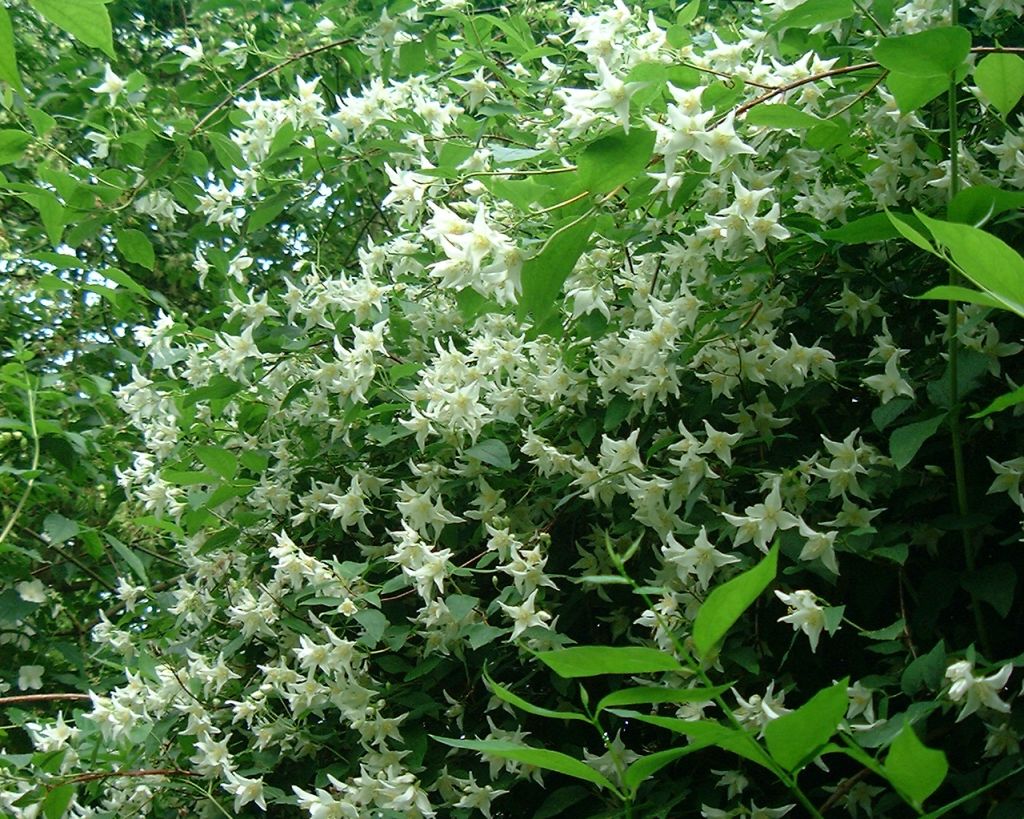#206 (SH.6) LONG ISLAND MOCK ORANGE
Philadelphus falconeri

Planted: 1931
View On MapThis shrub can be found on the east side of the Philadelphus Walk.
| Distribution: | Wide distribution after discovery circa 1881. |
| Planting Date: | February 1931, supplied by Thomas Smith, Daisy Hill Nursery, Newry, Northern Ireland |
| Appearance: | Large, bushy shrub with thin, lax twig system. Barely-toothed, soft, smallish leaves, ovate to lanceolate, smooth, except for a narrow line of hairs on each side of the central vein. Flowers single, with pointed petals, in terminal clusters of 5 or so; slight fragrance. |
| Growth Habit: | Slender arching growth supporting new flowering twigs. |
| Bark: | Flaking and peeling orangey brown on the main stem. Branches darkening to purplish brown. |
| Leaf: | Ovate to ovate lanceolate, slender pointed, rough to the touch and minutely toothed. 3 cm to 7 cm long by 2 cm to 4 cm wide. |
| Flowers: | Pure white to 4 cm across, with four lance-shaped, pointed petals in racemes of 3 to 7 on 5 cm 10 cm long twigs. Calyx glabrous except for down their margins. Styles separated half way down. |
| Fruit: | Seed capsules form and dry by Autumn. |
| Toxicity: | No parts are edible. |
| Potential size: | 3 m to 4 m |
| Uses: | Ornamental shrub |
| Plant Hunter: | The origin of this mock orange is not known. It was first distinguished in Parsons and Company nursery at Flushing, Long Island, United States, and is probably a hybrid. |
| Introduction Date: | Circa 1881 |